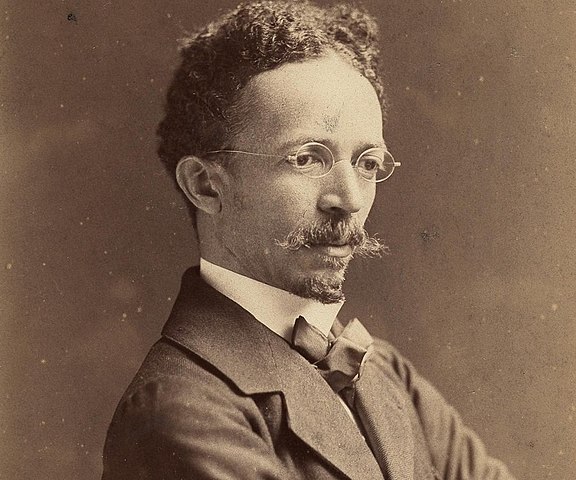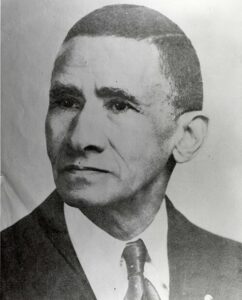Once upon a time in Black Entrepreneur History lived a man named Henry Ossawa Tanner who is considered to be the first African American artist to have become widely successful internationally, despite there being African American artists before him such as G.W.Hobbs (1700s), Scipio Morehead (1700s) and Joshua (William) Johnson (1700s) and Robert S. Duncanson(1800s). Henry Ossawa Tanner was also a man who was possibly conflicted heavily with being seen as a Black man first, and even attempted at white passing[3] whenever he could, especially when it meant him being taunted or rejected.
Henry Ossawa Turner was born in Pittsburgh, Pennsylvania, the son of a African American minister at the African Methodist Episcopal Church named Benjamin Tucker Tanner, founder of The Christian Reporter newspaper. His mother was a woman named Sarah who was enslaved before escaping slavery. Both his parents were African American, however, Tanner was a lighter skinned man, almost able to pass for white. [African Americans are a multi-ethnic ethnic group of people, in various skin tones, from lighter to darker].
Tanner had a difficult time with people not accepting him as a human being and just a human being throughout his life. Some people knew he was black and others didn’t, and either way, he didn’t want to push the issue or speak on his race. He just wanted to live and be, and society wasn’t ever going to allow that.
In his autobiography titled The Story of an Artist’s Life, he recorded how he was tortured by attacks on his race and became depressed at the very thought. He felt unloved and unwanted in the country of his birth. In order to raise the money to flee America which continued bringing him conflict and heartache, he founded an art studio in Atlanta, Georgia, and when that failed, he began teaching for a short while at what is now known as Clark Atlanta University, a historically Black college and university. After saving his money, he was finally able to go to Paris, France where his race would matter far less.
It was in 1891 that he left the United States of America because he felt he needed to do so in order to further his art goals, and according to the Smithsonian American Art Museum, he couldn’t do that and fight racial discrimination at the same time[2]. He wanted to reach the climax of his art, and didn’t want to be distracted. A distraction of anger and hiding his race due to fear of not being able to reach his full potential because of racism made him flee to Europe as he disagreed with how America formed racial ideas[3].
Henry Ossawa Tanner’s Art
“The merit of his works has almost obliterated the color line in the standards of criticism invoked in estimating the superior ability of the artist.” – Chicago Tribune 06 Nov 1898, Sun Page 43
Henry Ossawa Tanner wanted anyone who admired his art to see it as good art as its first classification, and didn’t want people to only consider it as artwork done by a Black person. Back in the 1800s this was very important because anything tending to come from a Black person wasn’t going to be considered up to standard due to racist, untrue ideas of African Americans being incapable. Therefore, he preferred not bring up his race, but his art. His thought was more to make strides in art overall, as an artist. It was and still is typical for the arts to have this racial classification first, instead of secondary. In his own quote:
“I should positively refuse to give any support to any distinct art. Good art is good art, who the artist is is a secondary consideration.”
According to the Chicago Tribune of 1898, “While Mr. Tanner is admittedly more than a colored artist, the fact that a colored man has won high distinction in the art world of today is an important item in the enlarging inventory of facts cited to prove to skeptical Americans that colored men, even in this country, are mentally capable of contributing to the best things in the world. While there is no such thing as negro art in the country, the negro race, through Henry O. Tanner, H.M. Bannister and Edmonia Lewis have all contributed to the enrichment of American art.”– Chicago Tribune 06 Nov 1898, Sun Page 43
Some of his most famous and earliest works of art include:
- Sabot Makers -1893
- The Banjo Lesson – His first exhibited picture in Paris Salon – 1894 – owned by Hampton Institute
- Daniel in the Lion’s Den – 1896
- Resurrection of Lazarus – 1897 – Bought by the French government
- The Annunciation – 1898
- Jerusalem, the Waiting Place of the Jews- 1898

Tanner attributed both his Black side and White side for being who he was, but also never wanted either one of them to matter when it came to his art which dealt more with the spirit being and his faith.
Some of his quotes are as follows: “I believe the Negro blood counts, and counts to my advantage, though it has caused me at times, a life of great humiliation and sorrow, unlimited “kicks” & “cuffs” but that it is the source of all my talents (if I have any) I do not believe, any more than I believe it all comes from my English ancestors.”
Even in saying “English ancestors”, he exaggerated the fact that he is from so much English blood when that wasn’t the case. In the end, though Tanner passed away a highly acclaimed painter, he may have left this world scarred, trying to hide Blackness from his identity and push forth the smaller portion of whiteness in his ancestry which could sometimes allow him to white pass, even when he was a baby. This happened when his mother utilized his light skin color to get a ride in order to escape the cold weather and keep infant Tanner warm. She pulled a veil over her face, hiding her identity. However, when they discovered she was actually black and her child was, they put her off the bus into the cold. This angered Tanner when he learned the story of his mother as an adult, and he never forgave the white people who harmed his mother[3].
In this case, some could argue and opinion that Henry Ossawa Tanner suffered slightly from Stockholm Syndrome, but others can argue at the same time that he simply wanted to be known for his art. Either way, he was known for his race and his art, and that will never change.
Henry Ossawa Tanner’s Death
Henry Ossawa Tanner passed away in 1937 in Paris.
Sources:
- Chicago Tribune 06 Nov 1898, Sun Page 43
- https://americanart.si.edu/artist/henry-ossawa-tanner-4742
- Nineteenth Century Art Worldwide – http://19thc-artworldwide.org/index.php/autumn09/fantin-latour-in-australia/347
- Wikipedia Public Domain picture in use of Henry Tanner





More Related Stories
Isaac Scott Hathaway – Founder of Isaac Hathaway Art Company & Designer of First African American Coin
James Wormley – Founder of the Most Expensive Hotel in Washington D.C. in 1800s – the Wormley Hotel
William E. Matthews – Wealthy Financial Broker & Civil Rights Leader of 1800s